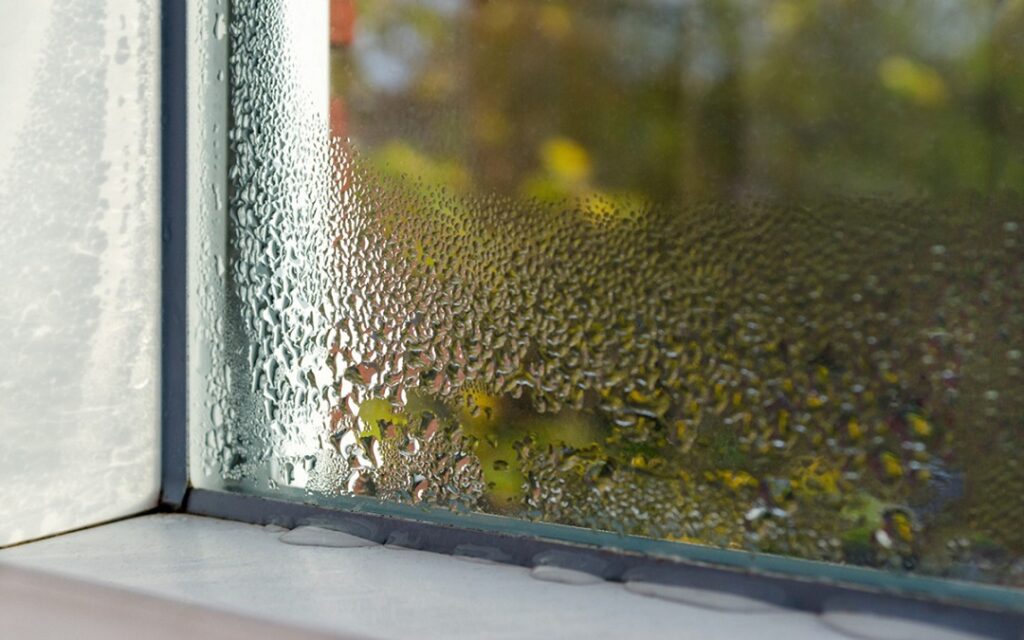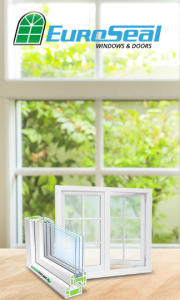CALL US: 416-650-5070
Window condensation is an annoying phenomenon that can leave you worried about insulation, mould, and your home’s temperature. However, there are so many reasons that you may experience window condensation, with some not being related to your windows at all.
However, determining the causes of window condensation is essential, as it can be a sign of a serious problem with your windows and your home’s ability to retain heat. To help, we’ve created this complete guide to window condensation, what it is and how to resolve it. To find out how you can limit window condensation, keep reading.

Water condensation happens when moisture in the air deposits itself on lower temperature surfaces, forming water droplets that collect to form lots of moisture. Water vapours are present in the air around us, but as long as your home is warm and well insulated, this rarely causes a problem as surfaces won’t be significantly colder than the air. Water condensation (while at face value, looks relatively harmless) can be a sign of a significant issue.
Condensation build-up can result in mould and damaged surfaces, as water collects on window sills and lifts paint. Some water collection is normal but if you notice that condensation forms on the inside of the pane, this is a sign that your windows need replacing. The main causes of condensation include water vapours being unable to escape due to poor ventilation, your home not retaining heat, or excess moisture in the air in particularly humid rooms.
There are some simple ways to combat water condensation. Here are some solutions:
A dehumidifier is a great way to reduce the amount of water vapour in the air, decreasing the amount that ends up collecting on your windows. An electronic dehumidifier works by sucking in cold, moist air and warming it through coils fed through a fan. This then feeds water down to the condenser, leaving it behind and releasing dry air. Placing this inside a particularly humid room will help to reduce condensation on windows.
Air circulation is imperative to preventing water condensation. Mostly, water will condense onto your cold surfaces more if it can’t escape. While this can be a sign that your windows are doing a great job at keeping the air inside your home, water vapour needs to escape. Consider opening your windows for an hour or two a day, especially if you’re drying laundry inside. This will prevent too much water from evaporating into the air.
As water vapour collects on cool surfaces, a good way to prevent condensation is by increasing the room temperature. It’s recommended to keep your home at least 64.4℉ to reduce condensation collecting on windows. Having a heat source in a humid room will warm the air, keeping surfaces like walls and windows at a constant temperature.
If you don’t have double or triple glazing in your home and you’re noticing lots of water condensation build-up, then you can try using storm windows. Storm windows install on the outside of your home and act as a protective barrier between the outside elements and your windows. This provides additional insulation and stops your windows from getting as cold as outside temperatures.
Most of us love houseplants. From improving air quality to providing valuable decoration, our houseplants are the perfect finishing touch to our homes. However, they do release moisture into the air alongside oxygen.
While this isn’t usually enough to produce significant amounts of condensation, if you have many houseplants alongside high humidity levels, they could be making it much worse. Consider repositioning your house plants away from windows to avoid this issue.
Your extractor fans aren’t just for show. Bathrooms and kitchens are typically very damp areas that require additional ventilation to avoid condensation build-up. When you’re cooking on the stove, you’ll notice that lots of steam rises from your pans. This moisture needs somewhere to escape, or it will collect on your cold surfaces. Using your extractor fan will remove the steam from your room and reduce the amount of moisture left to collect.
Are you noticing condensation collecting on the inside of your windows? It’s time for some new windows. Don’t panic! Euroseal is here to help. Euroseal is a window replacement company that offers our customers high-quality window installation services and a stunning selection of windows to choose from. We can supply you with more energy-efficient windows that not only stop water from collecting but also keep your home warm and toasty. To find out more about our windows services, why not contact us today?

Read more